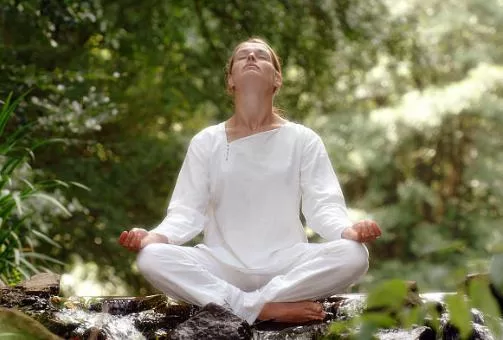How Can Visualization Be Used To Improve Overall Well-Being?
Visualization techniques can be utilized to enhance mental and physical health, leading to an overall improvement in well-being.

Selfpause Affirmation App
Download the app to get 1,000’s of affirmation meditations and everything you need to write, record and listen to your own.
Visualization, also known as mental imagery or guided imagery, is a technique that involves creating vivid, sensory mental pictures in order to achieve a desired outcome. This technique has been used in various fields such as sports, medicine, and psychology to improve overall well-being.
In sports, visualization is often used by athletes to improve their performance. Athletes will imagine themselves going through a successful performance, from the start to the finish, in order to build confidence and reduce performance anxiety. This technique has been shown to improve muscle memory, reaction time, and overall performance in a variety of sports.

In medicine, visualization is used as a complementary therapy to assist in healing. Patients are guided to visualize themselves healing and their body becoming stronger and healthier. This technique has been shown to reduce pain, anxiety, and depression, as well as improve immune function, blood flow, and overall health outcomes.
In psychology, visualization is used to help individuals achieve their goals and overcome obstacles. This technique is often used in cognitive-behavioral therapy, which is a form of therapy that focuses on changing negative thoughts, feelings, and behaviors. Visualization can be used to help individuals overcome fears, phobias, and other emotional issues, as well as achieve personal goals such as weight loss, career advancement, and stress reduction.

One key element in visualization is to make the mental images as vivid and realistic as possible. This can be done by using all five senses to create the images. For example, an athlete can imagine the feel of the ball in their hands, the sound of the crowd cheering, and the smell of the grass on the field. Similarly, a patient can imagine the feel of their body healing and the sound of their breath becoming steady and calm.
Another key element in visualization is to make the images positive and self-affirming. The images should be focused on what you want to achieve, rather than what you don’t want to happen. For example, an athlete should visualize themselves making a winning shot, rather than missing the shot. Similarly, a patient should visualize themselves feeling healthy and strong, rather than focusing on their illness or pain.

Visualization can be done in a variety of ways, such as through guided imagery recordings, written scripts, or simply closing your eyes and creating the images in your mind. It is also important to practice visualization regularly, ideally for a few minutes every day, in order to achieve the desired outcome.
To improve overall well-being, it is important to focus on both physical and mental well-being. Visualization can be used to improve physical well-being by reducing pain, improving immune function, and increasing blood flow. It can also be used to improve mental well-being by reducing anxiety, depression, and stress, as well as helping to achieve personal goals.

In addition to visualization, there are also other techniques that can be used to improve overall well-being. Exercise, meditation, and mindfulness are all effective ways to improve physical and mental well-being. A healthy diet, adequate sleep, and regular check-ups with a healthcare professional are also important for maintaining overall health.
In conclusion, visualization is a powerful technique that can be used to improve overall well-being. It can be used in sports, medicine, and psychology to improve performance, reduce pain, and overcome emotional issues. To achieve the desired outcome, it is important to make the mental images vivid and realistic, focus on what you want to achieve, and practice regularly. While visualization is an effective technique, it should be combined with other strategies such as exercise, meditation, mindfulness, healthy diet, adequate sleep, and regular check-ups with a healthcare professional to achieve optimal well-being.
